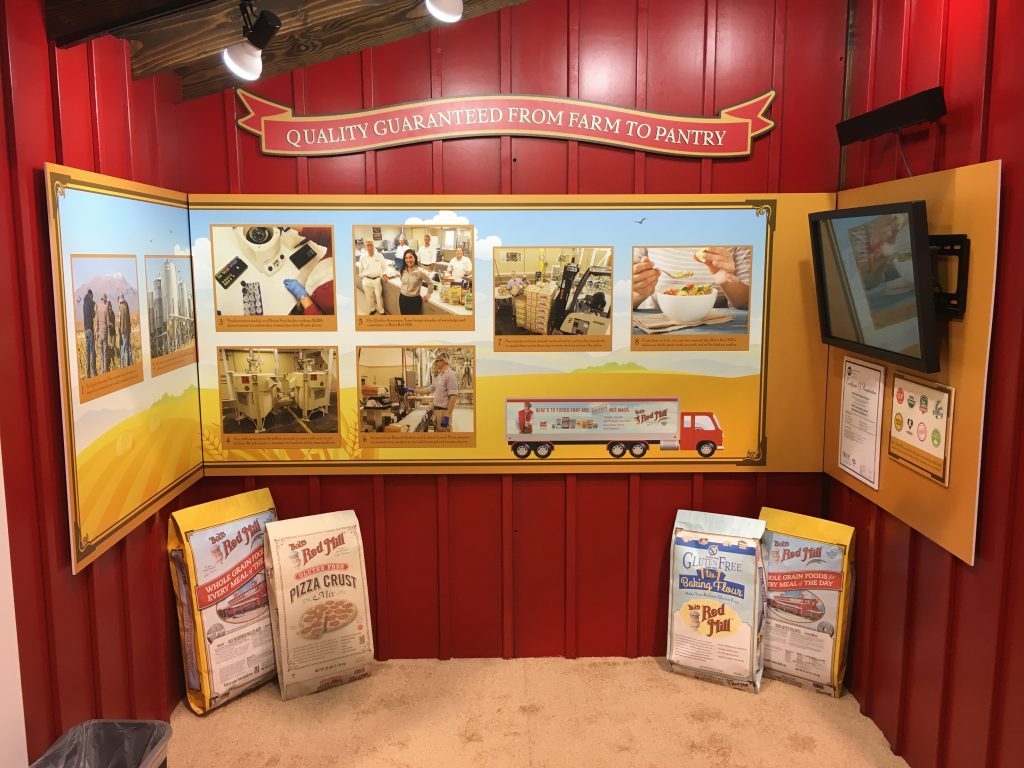I’m guilty of sometimes thinking that once a tradeshow is over for the year, it’s over. For a long time. Until next year! But that’s not really the case, no matter how much I’d like to be done!
As a tradeshow manager, or someone who attends or exhibits at tradeshows on a regular basis, it’s easy to compartmentalize each show:
“Got another show in two months, but it’s a small regional one. I can wait another couple of weeks to make sure I get it all together in time.”

But now that the show is over, it’s a good time to start planning – or at least thinking about – the next time you’ll exhibit at the show. Look at your preparation time from how much of a splash you want to make, how much “new” stuff you’ll implement in your exhibit, and of course, budget. Budget drives everything. Almost.
If the biggest show of the year just ended, and you’re back in the office, you have another 11.5 months before you pack up and head to the airport again (and that doesn’t take into account another half-dozen smaller shows that may keep you on the road).
What now?
Relax for a Few Moments
Give yourself time to breath. There’s still follow-up and record-keeping to be done from the last show. File and share data such as photos, visitor comments, leads, etc. with the proper people. Go over the metrics you collected, identify important information that will help you make decisions for next year’s show. Whatever you chose to document, make sure it’s archived and available for your team to review, digest and understand. As they say, if you didn’t write it down or document it, it didn’t happen.
What’s New Next Year?
But before too much time passes, look at the show from a new angle: if you’re going to do something new, exciting and impactful (and why wouldn’t you?), you need time to brainstorm, plan, research, talk with partners such as exhibit houses, tech and AV vendors and more.
Most of your time will go into planning and design. Once the plan is set, the implementation starts. Depending on your plan, that could mean working with a designer or exhibit house to create a new exhibit from scratch, or it could mean adding some unique element to your current booth (like we did with our client Bob’s Red Mill when they wanted a 42” touchscreen with several videos that visitors can pull up with a touch of a finger).
During the planning phase, you might be addressing the launch of new products, new branding, redefining your objectives and goals, and identifying how you’ll communicate your messaging, capture new leads and so on. It’s a long process, and you should give it the time it deserves.
Many companies approach a new exhibit project as just that: a new exhibit and nothing more. Which means they don’t give all of the other items enough time and space. The exhibit is not a standalone item; it’s integral to everything else that your company is doing for the show. New products require proper display space, adequate space for graphics, and perhaps space to sample or demo them.
Social Media
If you have a social media marketing director, make sure you bring her into the mix during the process. They can pass along photos and videos from the recent show and use them to build interest in next year’s show. During the lead-up to next year’s show, focus on building interest in the event, building interest in your appearance at the event, and finally on building interest in the products or services you’ll debut or feature. Yes, this deserves a much longer discussion, but don’t let this element slip away. Make sure, as a tradeshow manager, that you’re involved in the discussions on how this will unfold.
Booth Staff Training
This subject could be the topic of a complete book (maybe I’ll make this my next book!), but suffice it to say at this point that, all other things being equal, a well-trained dynamite booth staff will perform head and shoulders above a staff that isn’t properly trained. Your staff should be outgoing without being pushy, engaging without being trite. Know what questions work and what don’t. Always have a smile. Don’t take rejection personally. If you haven’t trained your booth for a while, consider how good of an investment it can be.
Get Everyone On Board
Before undertaking a new large project, make sure you are communicating properly with all of the various entities: management, marketing team, sales team, production team, outside vendors and partners. They should all be aware of the project from the beginning and what their potential part in the dance might be. Communicate often and do it well. It’s hard to over-state the importance of your ability to communicate!


